December 2023
I have a passion for Edo Era architecture and gardens. Hama-rikyu Gardens has three beautifully restored Edo-period buildings.
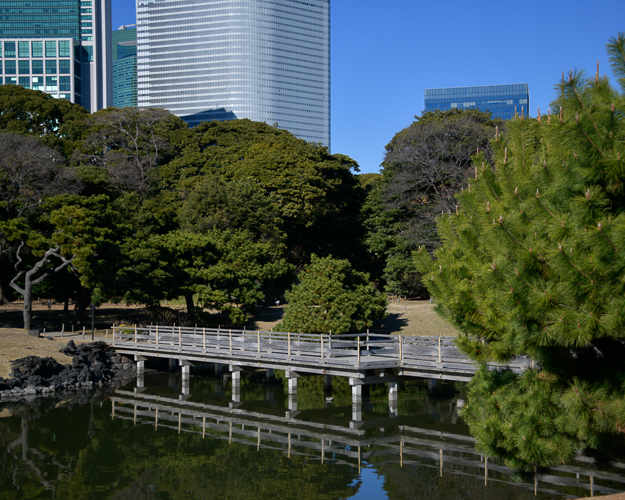
Hama-rikyu Garden was once the property of the Tokugawa family and then the Imperial family. It was almost completely destroyed in the Great Kanto Earthquake and in the bombings of World War II. After the Imperial Family restored and relinquished the garden to the city of Tokyo in 1946, Hama-rikyu was opened to the public and is now considered one of the most beautiful Edo-style gardens in Tokyo.
Ochaya
Though the term ochaya literally means “tea house,” the term follows the naming conventions of buildings or rooms used for Japanese tea ceremonies, known as chashitsu (“tea room”). Although tea is served at an ochaya, it is not, unlike teahouses and tearooms, its sole purpose.
Nakajima-no-ochaya
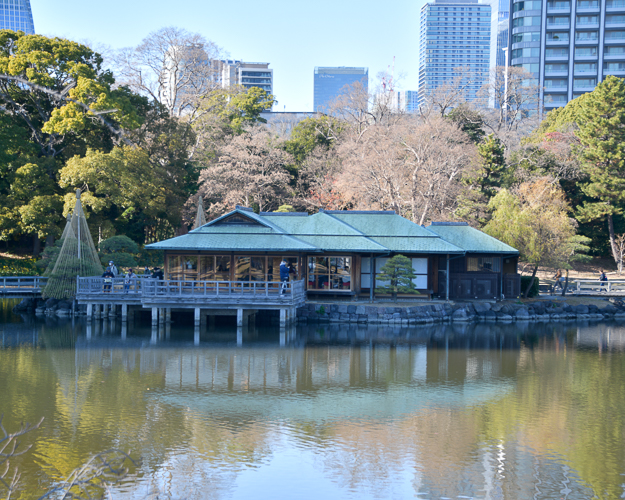
Nakajima-no-chaya pavilion, now serving as a tea room, was built in 1704 on the Nakajima islet in Shiori-no-ike pond; the pond is the only remaining seawater tidal pond from the Edo era within Tokyo.
The building was first built as a ochaya to be used by the Tokugawa shoguns and the nobles of the imperial court to relax. The building has been historically recreated over the years with the most recent being in 1983.
There are three other ochaya on the property. Tako-no-ochaya, Matsu-no-ochaya and Tsubame-no-ochaya. Succeeding shoguns used these buildings to engage in ikebana (Japanese flower arrangements) and waka (Japanese poetry) and to eat meals with their guests. Matsu-no-ochaya was rebuilt in 2010, and Tsubame-no-ochaya in 2015.
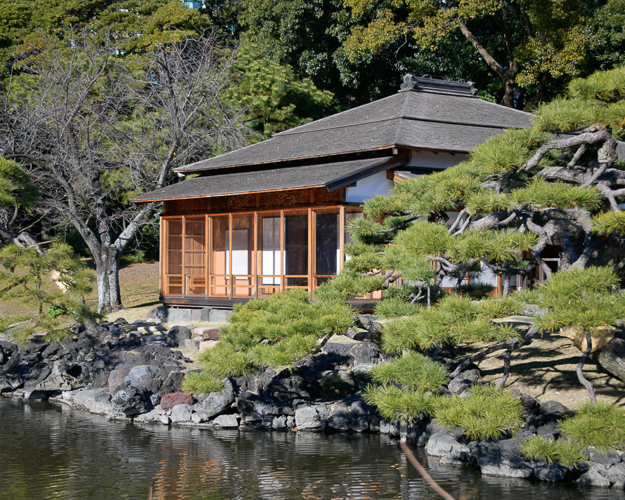
Matsu-no-ochaya
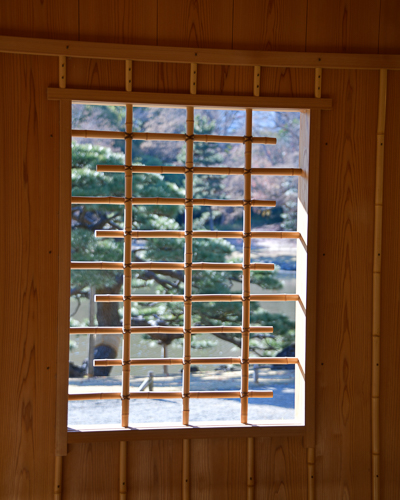
A stunning window design in matsu-no-ochaya
Traditional houses were built to deal with summer heat more than winter cold under the understanding that residents could put on layers of clothing in the winter. They were built of light materials — wood, bamboo, straw, and paper — which provide terrible insulation but allow breezes to enter, air to circulate, and heat to escape.
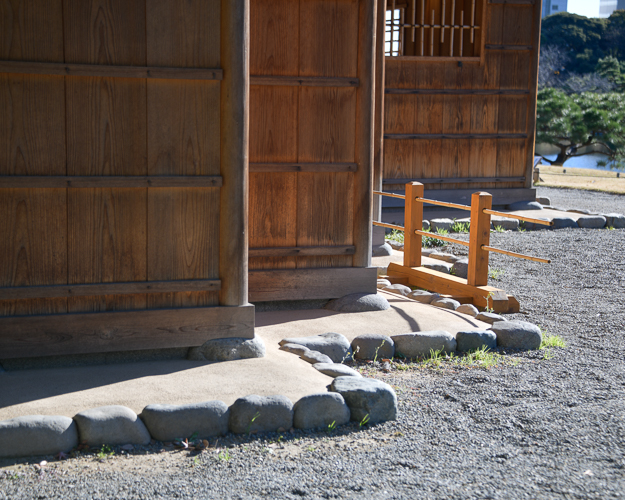
Exterior detailing of Matsu-no-Ochaya
Taka-no-Ochaya
“Taka-no-Ochaya” (falcon teahouse) is a single-story wooden structure that is just over 900 square feet in size. Unlike other ochaya in the park, Taka-no-Ochaya has a thatched roof and wide earth floor, making it resemble an old farmhouse. It is constructed of fine Japanese Cedar. The building was used as a resting place for shoguns, and there is also a “falcon room” in the teahouse where falcons could be kept.
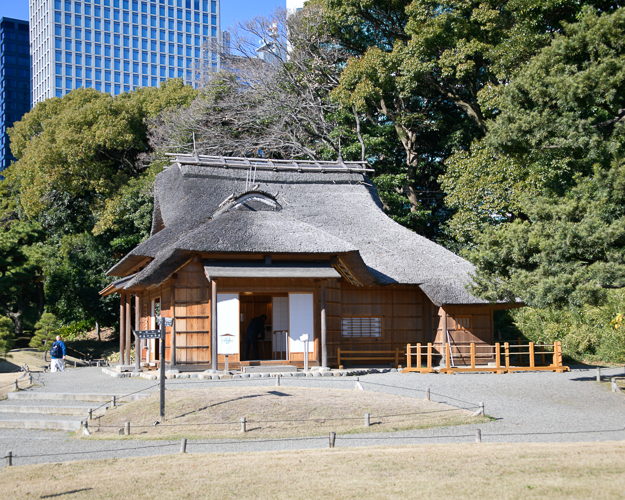
Taka-no-ochaya
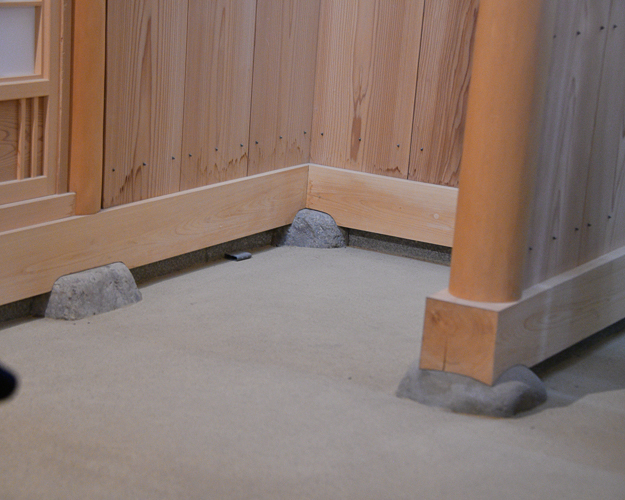
Interior flooring of Taka-no-ochaya
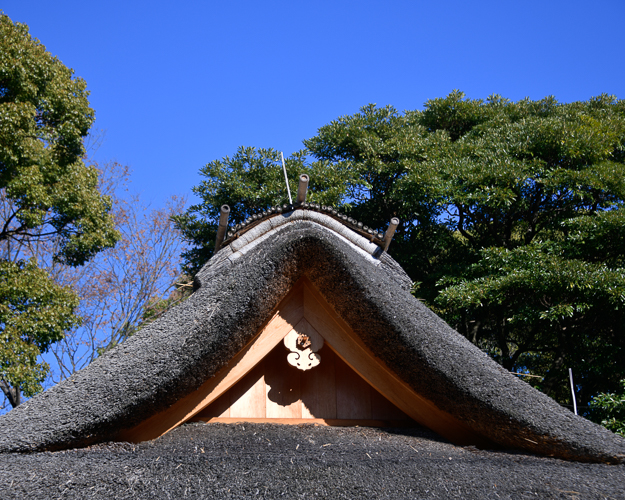
The thatched (kaya-buki) roof of taka-no-ochaya
The wood cap is called a mune-kazare (cresting). The small wooden pendant is a gegyo, which acts as a talisman.
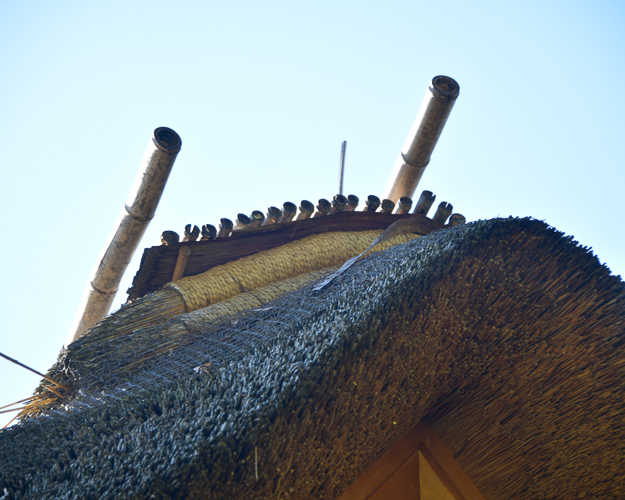
detailing of the thatched roof
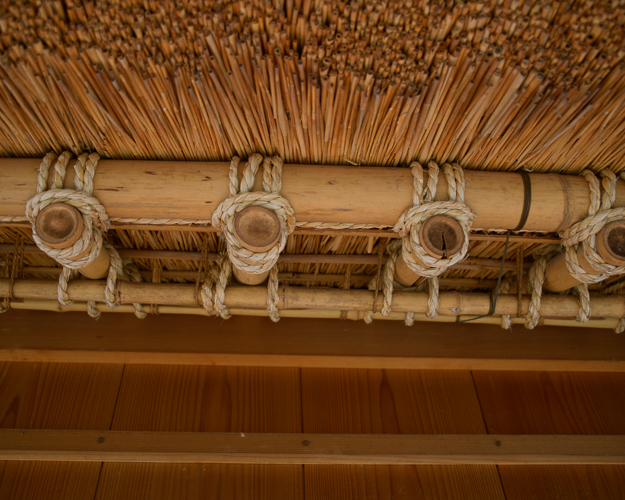
The underside of the thatched roof on the exterior
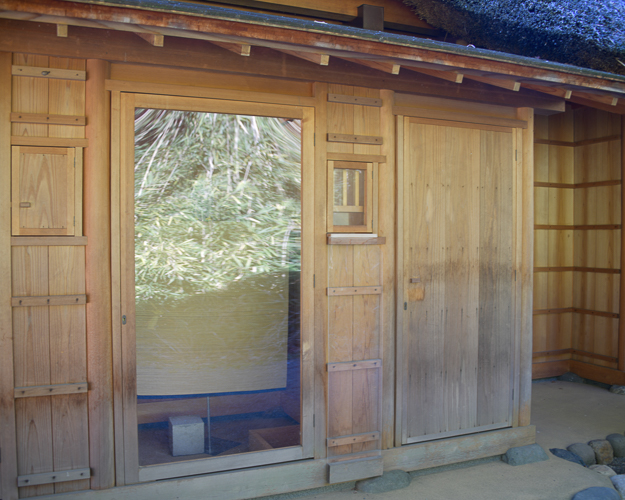
The back of the ochaya where the falcons were kept. The door would have been solid, and there is a perch inside the small room. A rush mat (Hakodate) is draped over the perch for a better grip. The small door to the right is to give food to the falcon. At the bottom right inside the room, you can see a birdbath.
The Tokyo Metropolitan Government started the restoration of Taka-no-Ochaya in November 2016, spending 230 million yen in the process. It is a treat to see these completely restored in a way that shows the original form they would have taken, but there is steel in much of it and other modern construction advantages to ensure they survive any future earthquake.
